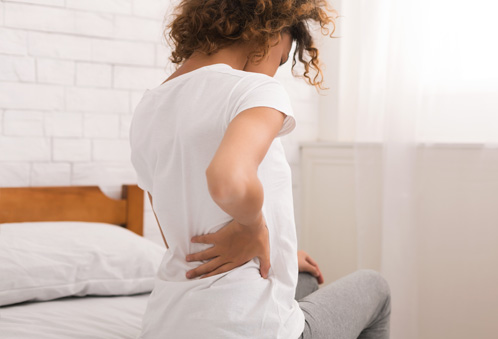In patients with congenital lumbar spinal stenosis, symptoms that affect their quality of life may appear prematurely, between 30 and 50 years of age, while patients with acquired lumbar spinal stenosis usually develop symptoms after the age of 60.

The symptoms of lumbar spinal stenosis are listed here in order of frequency:
- Neurogenic claudication of the gait: this consists of pain, discomfort or heaviness in one or both legs, which appears when walking and forces the patient to stop and sit down to rest. After resting the patient can recover and continue walking.
- Tingling and numbness in one or both legs.
- Radiculopathy or damage in the nerves of one or both legs.
- Weakness or loss of strength in one or both legs.
- Low back pain.
- Urinary incontinence.



